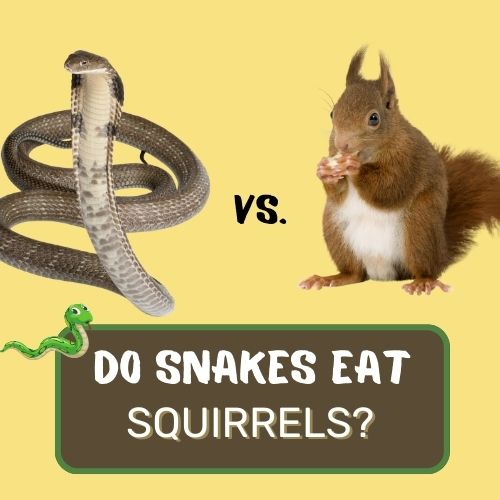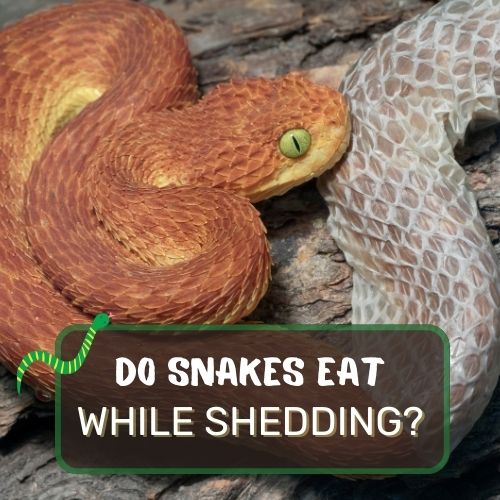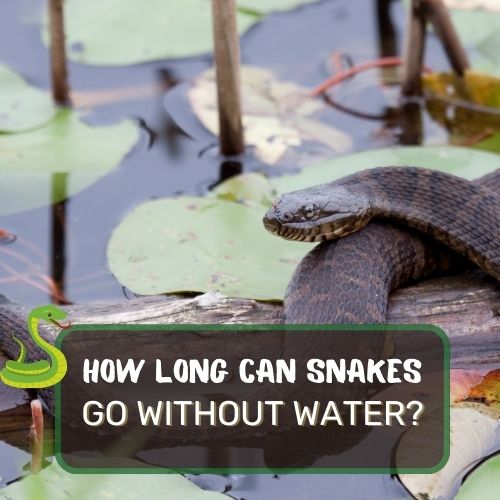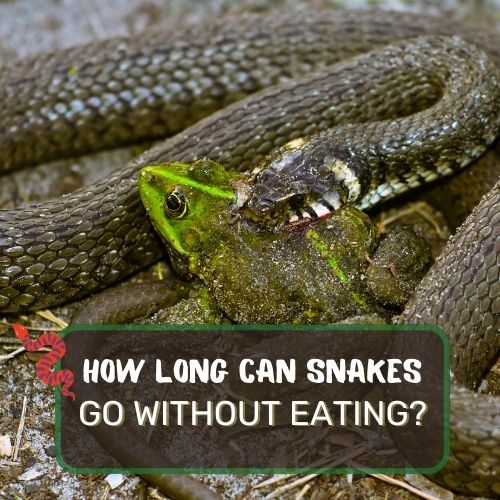
Intrigued by the age-old question, “Do snakes eat squirrels?”
This article unravels the captivating world of snake and squirrel interactions, delving into the factors that determine whether these slithery predators indulge in the nutty delights of their agile prey.
We’ll explore the diverse diets of snakes, shedding light on the species and habitats most likely to encounter these tree-dwelling rodents.
Discover the intriguing defense tactics employed by squirrels to outwit their reptilian foes, and learn about the rare occurrences of snake-squirrel predation.
Furthermore, we’ll discuss the implications of these interactions on both snake and squirrel populations, giving you a well-rounded perspective on the complex dynamics of nature’s predator-prey relationships.
So, fasten your seatbelts for an adventure through the wilderness, as we uncover the captivating world of “do snakes eat squirrels?”
Table of Contents
Do Snakes Eat Squirrels? (Short Answer)
Yes, snakes can and do eat squirrels, especially larger species of snakes that are capable of subduing and swallowing such prey. The most prominent example is the rattlesnake, found in North America. Rattlesnakes, particularly the larger species like the Eastern Diamondback, can prey on small mammals, including squirrels. Another example is the black racer, which might consume young squirrels. In many ecosystems, snakes play a crucial role as predators, helping control populations of small mammals. However, it’s essential to note that not all snakes eat squirrels; the snake’s size and habitat play significant roles in determining its diet.
Snakes’ Diet

Snakes’ eating habits and preferences
Snakes, those enigmatic creatures that slither through the grass and silently stalk their prey, have a fascinating diet that varies across species.
However, the common trait among them is their preference for a diet consisting mainly of small animals like rodents, birds, and amphibians.
Different types of snakes and their diets
Each snake species has its own dietary preferences, shaped by factors like its size, habitat, and hunting techniques.
For instance, the formidable Burmese Python, one of the largest snakes in the world, primarily preys on mammals like rabbits, rats, and even deer. On the other end of the scale, the tiny garter snake feeds on insects, worms, and small fish.
Common prey items for snakes
Among the many potential prey items for snakes, one of the most intriguing is the squirrel. These tree-dwelling rodents present a challenging and nutritious meal for certain snake species.
While not all snakes are equipped to tackle squirrels, some, like the skillful tree-climbing rat snakes, have adapted to this specialized hunting.
Snakes as Squirrels’ Predators

Introduction to squirrels’ natural predators
As adorable as squirrels may seem, they live in a world filled with dangers. Numerous predators lurk in the shadows, ready to pounce on these agile rodents.
From birds of prey to mammals, squirrels must always be on high alert to survive in the wild.
Animals that eat squirrels
Among the various predators that have a keen eye on squirrels, snakes hold a significant place. Snakes, with their stealthy nature and quick strikes, can be a formidable threat to squirrels, especially when the rodents venture close to the ground.
Other squirrel predators include hawks, owls, foxes, and even domestic cats.
Role of snakes in the squirrel food chain
Snakes play an essential role in the squirrel food chain, helping to control the rodent population and maintaining a balanced ecosystem.
As predators of squirrels, they regulate the numbers of these small mammals, preventing potential overpopulation that could disrupt the balance of the surrounding flora and fauna.
Snakes, as both predators and prey, contribute significantly to the biodiversity and survival of various species, making them a vital element in the circle of life.
So, next time you spot a snake or a squirrel, take a moment to appreciate the fascinating connection they share in the wild.
More Factors on Why Snakes Eat Squirrels?

Explanation of why snakes may or may not eat squirrels
The question of whether snakes eat squirrels depends on various factors. Firstly, it relates to the snake’s species and size.
Larger snake species, like pythons and certain constrictors, are more likely to prey on squirrels due to their ability to overpower and consume larger prey.
Smaller snakes, on the other hand, might find squirrels too big to handle and opt for smaller prey.
Another crucial factor is the snake’s hunting strategy. Snakes that are primarily ground-dwellers may not frequently encounter squirrels, which tend to spend most of their time in trees.
However, arboreal snakes that are skillful climbers have a better chance of hunting squirrels in their natural habitat.
Examples of snakes that have been observed eating squirrels
There have been numerous documented cases of snakes consuming squirrels. For example, the Eastern Rat Snake (Pantherophis alleghaniensis) is a proficient climber that often preys on squirrels in wooded areas.
Similarly, the Indigo Snake (Drymarchon corais) is known to consume small mammals, including squirrels, as part of its diet.
The infamous King Cobra (Ophiophagus hannah), one of the most venomous snakes in the world, has been observed preying on tree-dwelling animals, including squirrels.
Its potent venom and impressive size make it a formidable predator for any small mammal that crosses its path.
Factors Affecting Snake-Squirrel Interactions

Size and species of snake and squirrel
The outcome of snake-squirrel interactions heavily depends on the size and species of both the snake and the squirrel involved.
As mentioned earlier, larger snake species have a better chance of successfully hunting and consuming squirrels due to their physical advantage.
Smaller squirrels may be more vulnerable to predation, while larger squirrels could potentially defend themselves better against certain snakes.
Habitat and environment
The environment in which the snake and squirrel coexist also plays a significant role in their interactions.
Snakes that inhabit forests and wooded areas are more likely to encounter squirrels as potential prey.
On the other hand, snakes living in open grasslands or deserts may have less opportunity to encounter squirrels, which are primarily arboreal creatures.
Availability of other prey items
The availability of alternative prey can influence the snake’s decision to hunt squirrels. If the snake’s preferred prey items are abundant and easily accessible, it may not actively seek out squirrels.
However, when other prey becomes scarce, or if the snake is particularly opportunistic, it might turn to squirrels as a viable food source.
In conclusion, snakes do eat squirrels, but the frequency and success of such interactions depend on various factors.
The relationship between these two creatures demonstrates the intricate connections and complexities within ecosystems.
As we delve deeper into these predator-prey dynamics, we gain a deeper appreciation for the delicate balance that sustains life in the natural world.
Snakes and Young Squirrels

The vulnerability of young squirrels to snake predation
Young squirrels are particularly vulnerable to snake predation. Their small size, lack of experience, and limited mobility make them easy targets for opportunistic snakes.
In their early stages of life, before they develop the agility and awareness of adult squirrels, young ones are at higher risk of falling victim to snake attacks.
Examples of snakes preying on young squirrels
Observations of snakes preying on young squirrels have been reported in various regions. For instance, rat snakes are known to climb trees and raid squirrel nests, feeding on defenseless young squirrels.
In some cases, the scent trails left by young squirrels can lead snakes directly to their nests.
Implications for squirrel populations
The predation of young squirrels by snakes can have significant implications for squirrel populations.
High levels of predation on young squirrels can lead to a decline in the overall squirrel population over time, affecting the ecosystem as a whole.
A decrease in squirrel numbers could also impact the populations of plants that depend on squirrels for seed dispersal.
Defense Mechanisms of Squirrels

How squirrels defend themselves against predators
Squirrels have developed several defense mechanisms to protect themselves from predators, including snakes.
Their primary means of defense involve their agility and speed. When faced with danger, squirrels use their powerful hind legs to leap and dash away from potential threats.
Their ability to climb trees with incredible speed and skill also provides an effective escape route.
Specific defense tactics against snakes
When confronted by snakes, squirrels may employ additional defense tactics. Some species of squirrels are known to emit high-pitched vocalizations to warn others of danger.
Moreover, they may engage in deceptive behavior, such as pretending to retrieve a hidden stash of food to distract the snake, allowing them a chance to escape.
Impact on snake-squirrel interactions
The squirrels’ defense mechanisms have a significant impact on their interactions with snakes. Their agility and alertness make it challenging for snakes to successfully catch them.
As a result, snakes may need to rely on other prey options, reducing the frequency of snake-squirrel interactions.
FAQ
What animal do snakes eat the most?
Snakes are carnivorous reptiles and primarily feed on small animals, such as rodents (mice, rats, voles), birds, and amphibians. Among these, rodents are often the most common prey for many snake species due to their abundance and easy accessibility in various habitats.
What are the squirrels’ biggest predators?
Squirrels face threats from a variety of predators in the wild. Some of their biggest predators include birds of prey, such as hawks and owls, as well as mammalian predators like foxes, raccoons, and domestic cats. Additionally, snakes, especially those skilled in climbing trees, can pose a significant threat to squirrels.
What is the biggest threat to squirrels?
The biggest threat to squirrels in their natural habitats is predation by various predators. However, habitat destruction and fragmentation due to human activities also pose a significant threat to squirrel populations. Loss of suitable nesting sites, food sources, and safe areas for raising young can negatively impact squirrel populations.
Conclusion
Recap of the main points discussed in the article
Throughout this article, we explored the fascinating world of snake and squirrel interactions.
We learned about the diverse eating habits of snakes, their preferred prey, and the factors that influence their decisions to hunt squirrels.
We also delved into the vulnerability of young squirrels to snake predation and the defense mechanisms squirrels employ to evade their predators.
The final answer to the question “Do snakes eat squirrels?”
Yes, snakes do eat squirrels, but the frequency and success of these interactions depend on various factors, including the snake and squirrel species involved, their habitat, and the availability of other prey items.




0 Comments